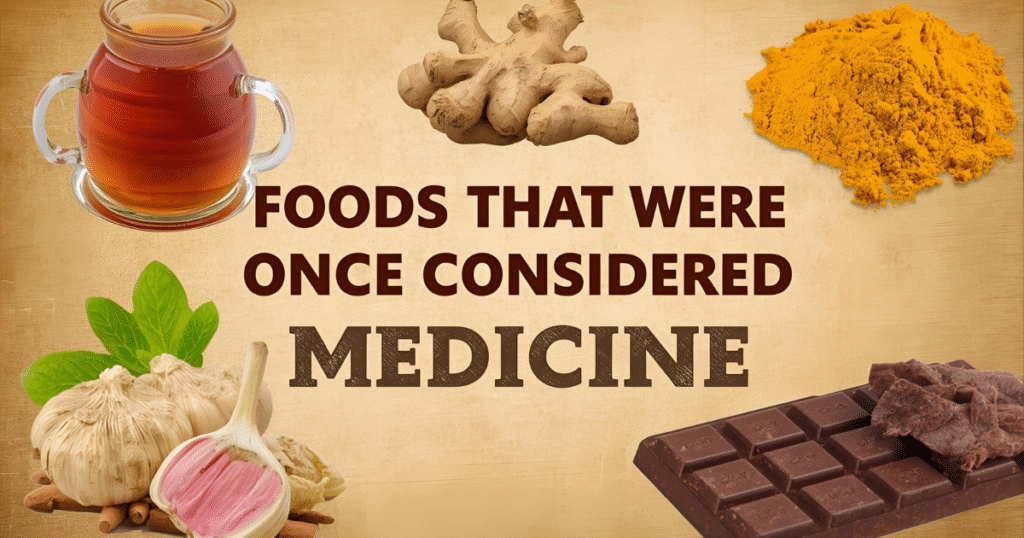
Throughout history, many Foods That Were Once Considered Medicine have shaped how people viewed health and healing. Before modern science, everyday foods like garlic, honey, and ginger weren’t just eaten for taste — they were trusted as cures for illnesses. These ancient beliefs remind us that the line between food and medicine has always been thin, sparking curiosity about the hidden power in our kitchens.
These curious traditions also remind us that what we eat has always been closely tied to our health. While some ancient remedies may sound strange today, many of them were surprisingly effective — and science is now uncovering the truth behind these age-old practices.
In this fun food fact, we’ll take a fascinating journey into the past to explore foods that were once considered medicine, uncovering how our ancestors trusted their meals to cure everything from stomach aches to fatigue.
The Ancient Bond Between Food and Healing: Foods That Were Once Considered Medicine
Long before modern science explained nutrition, ancient civilizations recognized that food could do more than satisfy hunger. People noticed patterns — certain herbs soothed pain, specific fruits boosted energy, and spices often relieved illness. With limited access to doctors, many communities looked to their kitchens and local markets as their first line of defense against sickness.
Food wasn’t just nourishment; it was nature’s pharmacy. From Egypt to China, Greece to India, cultures developed traditions that tied health directly to diet. This bond between food and healing laid the foundation for many of the remedies we still rely on today.
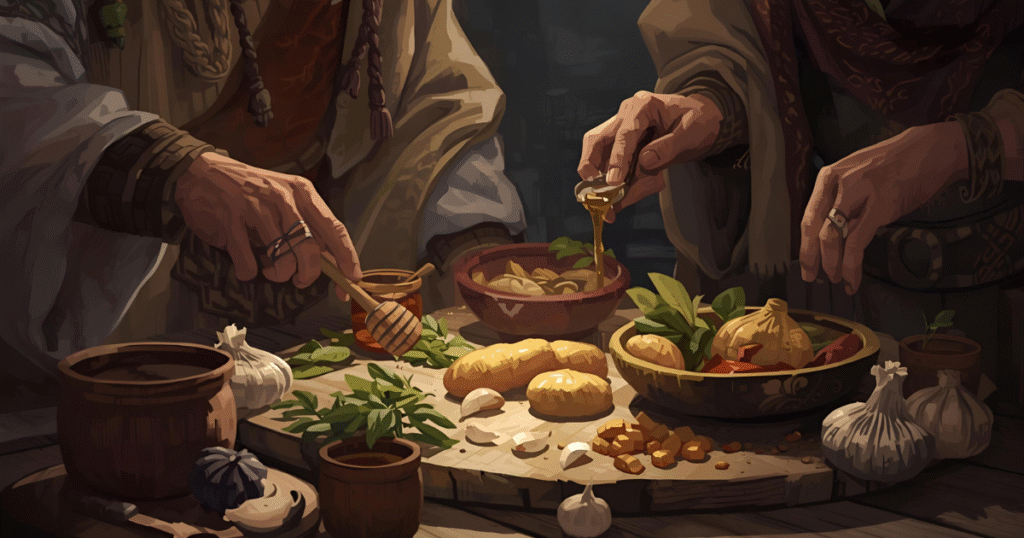
Why People Trusted Food as Cures Before Modern Medicine
In ancient times, medical knowledge was scarce, and diseases were poorly understood. Without laboratories or pharmaceutical drugs, people relied on observation. If garlic seemed to reduce infection, or ginger calmed nausea, word spread across generations.
Food was accessible, affordable, and safe compared to other treatments like bloodletting or toxic minerals. It was also tied to cultural beliefs — many societies viewed illness as an imbalance that food could restore. This practical and spiritual trust turned everyday ingredients into healing remedies.
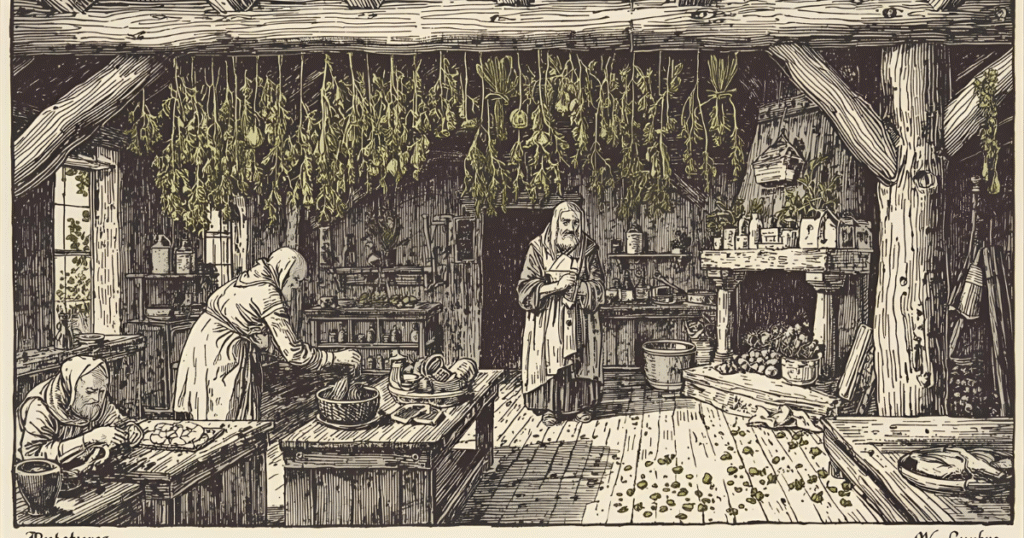
“Let food be thy medicine” – Hippocrates’ Timeless Idea
One of the most famous advocates of food-based healing was Hippocrates, the “Father of Medicine,” in ancient Greece. He is credited with the saying: “Let food be thy medicine, and medicine be thy food.”
Hippocrates believed that maintaining health started with a balanced diet. He recommended garlic for infections, honey for wounds, and vinegar for digestion. His philosophy shaped medical thought for centuries, reminding us that wellness begins at the dining table.
Even today, nutritionists echo this wisdom — proving that Hippocrates’ idea was far ahead of its time.
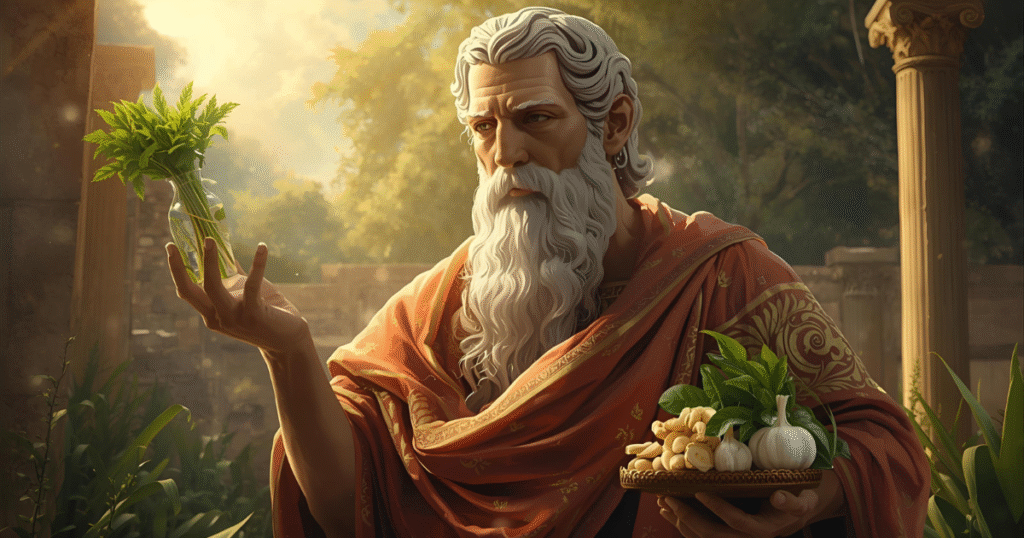
Everyday Foods Once Prescribed as Medicine
Throughout history, many everyday foods doubled as powerful remedies. These ingredients weren’t exotic or rare — they were staples found in kitchens and marketplaces. People believed they could heal infections, soothe pain, and even prevent disease. Let’s explore some of the most fascinating examples.
Garlic – Ancient Antibiotic and Heart Protector
Garlic has been treasured for thousands of years, not only for its flavor but also for its healing powers. The Egyptians gave garlic to pyramid workers to boost strength and ward off illness. Ancient Greeks and Romans believed it kept infections away and improved stamina.
Modern science now confirms garlic’s antibacterial properties and its role in supporting heart health — proving that ancient wisdom had a scientific basis.
👉 Fun Food Fact: In ancient Egypt, garlic was among the Foods That Were Once Considered Medicine. Workers building the pyramids ate it to boost strength and fight illness. 🧄⚡
Honey – Nature’s Sweet Wound Healer
Long before sugar became common, honey was used as both food and medicine. Ancient Egyptians applied honey to wounds and burns, believing it sped up healing. In Ayurveda and Chinese medicine, honey was considered a cure for coughs and sore throats.
Even today, honey is valued for its antimicrobial properties, making it one of the few ancient remedies still widely used in modern medicine.
👉 Fun Food Fact: Did you know honey is one of the Foods That Were Once Considered Medicine? Ancient healers used it for wounds and sore throats — a sweet cure still trusted today. 🍯✨
Ginger – The Go-To Digestive Aid
Used in Asia for over 2,000 years, ginger was a trusted cure for stomach problems. The Chinese prescribed it for nausea, colds, and circulation, while Indian healers used it in Ayurvedic remedies for digestion.
Science backs this up — ginger contains compounds that ease nausea and support digestion, making it one of the most effective food-based remedies across cultures.
👉 Fun Food Fact: In traditional Chinese medicine, ginger was one of the Foods That Were Once Considered Medicine, believed to warm the body and fight nausea. 🌿🔥
Cinnamon – Spice for Circulation and Colds
In ancient times, cinnamon was so highly valued it was considered a gift fit for kings. Beyond its aroma, it was believed to improve blood circulation and fight off colds. Ancient Egyptians even used it in embalming due to its preservative qualities.
Today, studies suggest cinnamon may help regulate blood sugar levels, showing that its “healing spice” reputation still has merit.
Vinegar – Ancient Tonic for Health
Vinegar, especially apple cider vinegar, has been used since ancient Babylon as a health tonic. Hippocrates himself recommended vinegar mixed with honey for coughs and sore throats. Roman soldiers drank diluted vinegar for energy and protection against illness.
Modern enthusiasts still turn to vinegar for digestion and blood sugar control — keeping this age-old remedy alive.
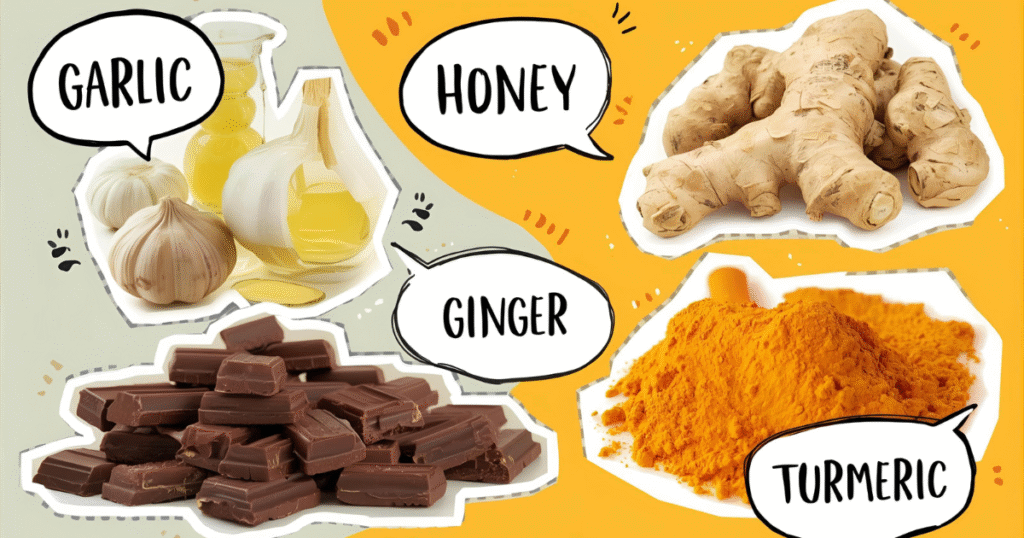
Surprising Foods with Healing Histories
Not all ancient remedies came from herbs and spices. Some of the world’s favorite indulgences — wine, chocolate, and coffee — were once prescribed as medicine. These foods may surprise us today, but in the past, they carried reputations as powerful cures.
Wine – Used for Antiseptic and Digestion
In ancient Greece and Rome, wine was more than a social drink. Physicians mixed it with herbs and used it as an antiseptic for wounds. Soldiers often carried wine because it was safer than water and believed to aid digestion after heavy meals.
Interestingly, modern studies show red wine contains antioxidants like resveratrol, which may benefit heart health — proving the ancients weren’t entirely wrong.
Chocolate – Once Recommended for Fatigue and Heart Health
When cacao first arrived in Europe from the Americas, it was treated like medicine rather than a sweet treat. Doctors prescribed drinking chocolate for fatigue, poor appetite, and even heart problems. In Aztec culture, cacao was considered sacred and believed to boost strength and vitality.
Today, dark chocolate is known for its antioxidants, which support circulation and brain health — echoing some of its historical uses.
Coffee – From Medicine to Morning Ritual
Before coffee became the world’s favorite wake-up drink, it was valued as a medicinal tonic. In the Middle East during the 15th century, coffee was used to sharpen focus, boost energy, and improve digestion. Some physicians even recommended it as a cure for headaches.
Modern science confirms that moderate coffee consumption can improve alertness, support brain function, and even lower the risk of certain diseases — making it one of the most enduring “medicinal” foods.
Modern Science vs. Ancient Beliefs
Ancient civilizations often relied on trial and error to discover which foods could heal. Some of their remedies stood the test of time, backed today by medical research. Others, however, were based on superstition, cultural beliefs, or limited understanding of the human body. Let’s explore which ancient food cures still hold value — and which have been debunked.
Remedies That Science Still Supports ✅
- Garlic – Modern studies confirm garlic’s antibacterial properties and its ability to support heart health.
- Honey – Research shows honey has antimicrobial effects and can help soothe sore throats and heal wounds.
- Ginger – Backed by science for easing nausea, morning sickness, and digestive issues.
- Cinnamon – Evidence suggests it may help regulate blood sugar and reduce inflammation.
- Coffee & Dark Chocolate – Both contain antioxidants that support brain and heart health when consumed in moderation.
Remedies That Didn’t Hold Up ❌
- Wine as a Universal Cure – While moderate red wine has some benefits, ancient claims that it could heal almost everything are exaggerated.
- Vinegar for Every Illness – Though useful for digestion, vinegar was once thought to cure infections and serious diseases, which science does not support.
- Superstitious Beliefs – In some cultures, foods were used as medicine simply because of their shape, color, or symbolic meaning (e.g., walnuts for brain health due to their “brain-like” shape).
The Balance Between Tradition and Science
While not every ancient belief holds true, the connection between diet and health remains undeniable. Many foods once considered “medicine” are now part of modern nutrition advice. The real lesson? Our ancestors may not have had the science, but they understood something essential: what we eat has a profound impact on how we feel.
The Legacy of Medicinal Foods in Today’s World
The idea of food as medicine never truly disappeared — it simply evolved. Today, many of the foods once prescribed as cures are making a comeback under a new name: superfoods. From turmeric lattes to green tea cleanses, modern wellness culture has revived ancient traditions, blending them with scientific research and lifestyle trends.
The Rise of Superfoods in Modern Wellness
Foods like turmeric, chia seeds, matcha, and garlic are marketed as superfoods because of their health benefits. Interestingly, many of these have roots in ancient remedies:
- Turmeric was used in Ayurveda for inflammation.
- Green tea has been part of Chinese medicine for centuries.
- Berries and nuts were staples in traditional diets for energy and longevity.
Marketers may present them as trendy discoveries, but in reality, they’re carrying forward the legacy of food-based healing.
Why Ancient Wisdom Still Fascinates Us
Even with advanced medicine, people are drawn to natural remedies. There’s comfort in knowing that simple, everyday foods might boost immunity, ease digestion, or improve energy. Ancient practices add a layer of cultural richness and storytelling that modern pills and tablets can’t match.
This curiosity explains why wellness influencers, nutritionists, and even medical researchers continue to explore the link between diet and healing — keeping the spirit of ancient food remedies alive.
❓ FAQs About Foods That Were Once Considered Medicine
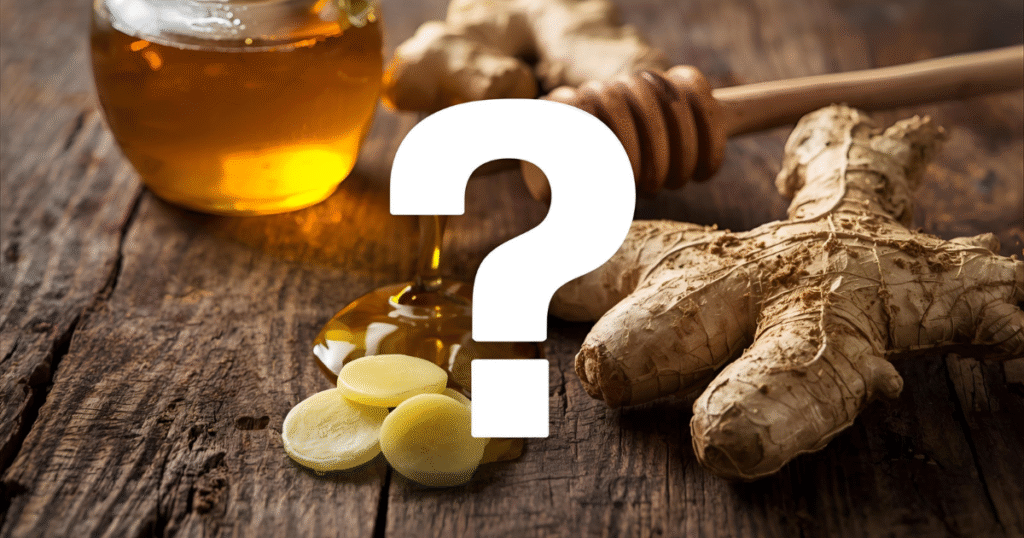
1. What foods were once considered medicine?
Many everyday foods like garlic, honey, ginger, cinnamon, and vinegar were once prescribed as medicine. People believed these foods could cure infections, improve digestion, and even boost energy.
2. Did ancient remedies with food really work?
Some remedies did work and are supported by modern science. For example, garlic has antibacterial properties, honey helps heal wounds, and ginger eases nausea. However, other remedies were based more on belief than fact.
3. Who said “Let food be thy medicine”?
This famous phrase is credited to Hippocrates, the ancient Greek physician known as the “Father of Medicine.” He emphasized diet and lifestyle as key factors in maintaining health.
4. Are foods still used as medicine today?
Yes! Many foods once seen as medicine are now called superfoods — like turmeric, green tea, berries, and nuts. While they don’t replace medical treatment, they play an important role in modern wellness and nutrition.
Conclusion – The Curious Link Between Food and Medicine
From garlic and honey to wine and chocolate, history shows us that people have always looked to their kitchens for cures. While not every ancient belief holds up under modern science, many of these foods remain essential in today’s diets — proving that our ancestors were onto something.
What’s fascinating is how this tradition continues. Whether we call them “healing foods” or “superfoods,” the idea that food can support health is as alive today as it was thousands of years ago.
👉 Fun Food Fact: Did you know that in medieval Europe, chocolate was one of the Foods That Were Once Considered Medicine, prescribed by doctors as a cure for sadness and low energy? That might explain why a piece of chocolate still feels like medicine for the soul! 🍫✨

🥗 5 Surprising Foods SUMMERY That Were Once Considered Medicine
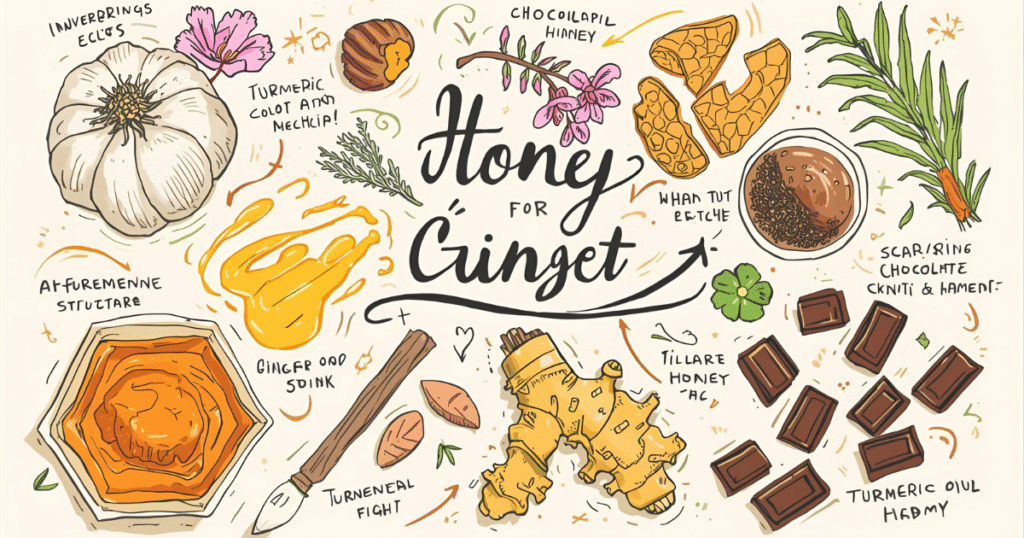
- Garlic – In ancient Egypt, garlic was one of the Foods That Were Once Considered Medicine, believed to boost strength and protect against illness. 🧄
- Honey – For centuries, honey has been listed among the Foods That Were Once Considered Medicine, trusted for healing wounds, coughs, and sore throats. 🍯
- Chocolate – In medieval Europe, chocolate was one of the Foods That Were Once Considered Medicine, prescribed to improve mood and energy. 🍫
- Ginger – In Chinese and Indian traditions, ginger was a key example of Foods That Were Once Considered Medicine, valued for easing nausea and improving digestion. 🌿
- Turmeric – Long before modern supplements, turmeric was known as one of the Foods That Were Once Considered Medicine, used to reduce inflammation and purify the body. ✨
✅ Call-to-Action (CTA)
Which of these ancient food remedies surprised you the most? 🍯🧄🍫
Have you ever tried honey for a sore throat, ginger for nausea, or garlic for boosting immunity?
💬 Share your thoughts and experiences in the comments below — your story might become the next Fun Food Fact on YesterBite!
👉 Don’t forget to explore more articles in our Food Facts & Curiosities category for more surprising food history
.👉 “If you enjoyed this, check out our post onANCIENT EGYPTIAN DIETfor more fascinating food history.”
